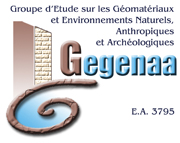Wireless environmental monitoring coupled to NDT for decay risk analysis (at St. Joseph Chapel in Reims, France)
Résumé
The development of the best strategies for building stone conservation requires the most suitable micro-environmental monitoring method coupled to the observation of the stones surface evolution. For that purpose, two different wireless sensor platforms were tested for monitoring two façades of the Saint Joseph Chapel (Reims, France). The Smartmote system recorded the temperature (T) and the relative humidity (RH) with very low energy consumption and excellent data transfer rate. The necessity to plug the base station to an internet connection and an electricity source was a complication. The Waspmote platform was constituted by a 3G module and plugged to a solar panel. This system appeared as the best cost solution and multi-parametric possibilities (T, RH, O3, NO, NO2 and SO2) even if the incompatibility between some software functions disabled the use of the low energy consumption mode. Data obtained thanks to this environmental monitoring during one year were divided in two periods of interest with different daily amplitude patterns between both façades: high T and low RH from April to September, and the reverse from October to March. The NO2 variations depended mainly on the temperature variations while the SO2 variations were conditional upon the anthropic activities. In parallel, colorimetry was used on 200 positions on each façade at one-year intervals. Comparing the two monitoring campaigns, luminance varied much more on the non-restored façade than on the restored façade. Environmental monitoring has to be coupled with NDT monitoring campaigns to assess the real weathering evolution of a monument.
| Origine | Fichiers produits par l'(les) auteur(s) |
|---|

